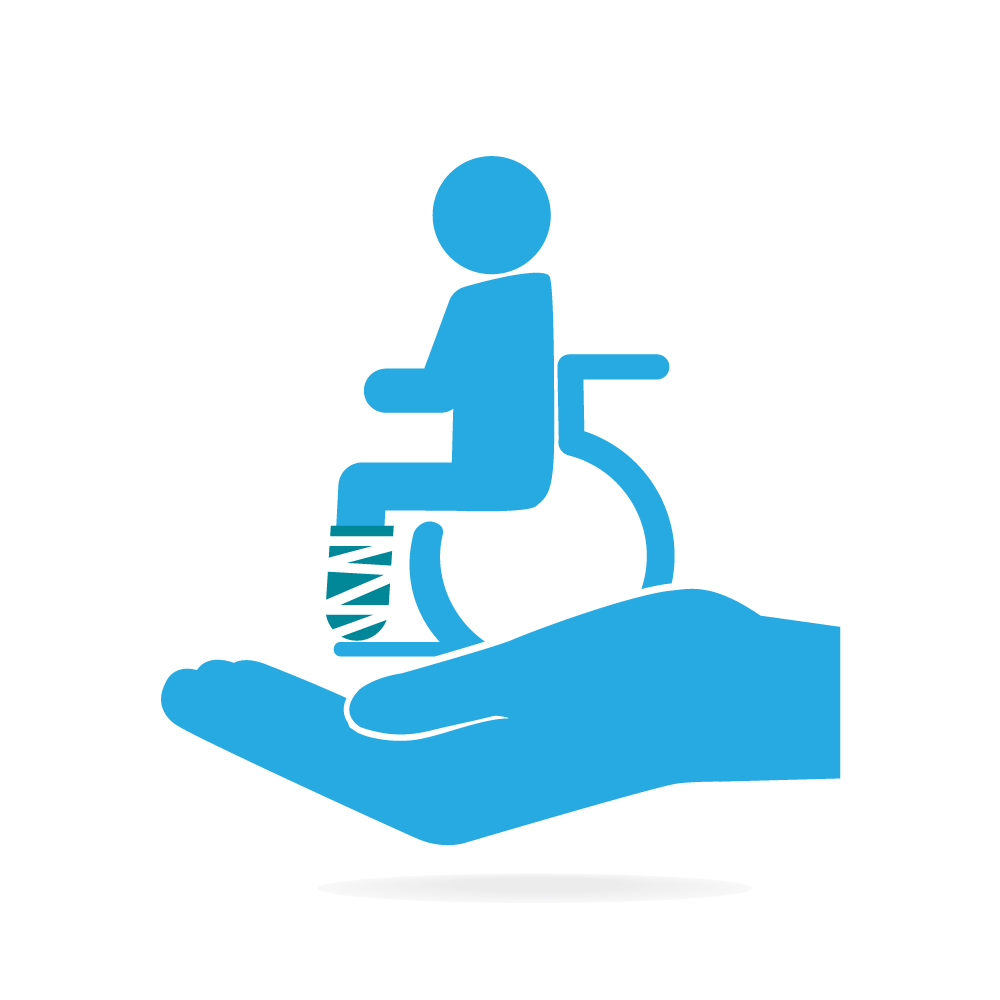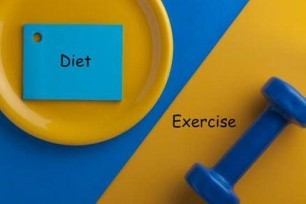General Insurance Blogs, Articles & Updates by - Magma HDI
Have us call you
- RENEW YOUR POLICY
- BUY NEW POLICY

Is Personal Accident Insurance essential in India?
While driving on the Indian roads, the possibility of an accident can never be ruled out. Whether due to a momentary lapse on your part or due to oversight on the part of someone else, accidents can take place anytime and anywhere. But the damages/losses incurred due to it can be mitigated with the help of personal accident insurance in India.
What is Personal Accident Insurance
Personal accident insurance is offered in combination with Third-party policy. Insurance companies charge a nominal fee for offering this coverage. Under this policy, you will be reimbursed by the insurance company for injuries suffered while driving your vehicle.
Is it mandatory to get personal accident insurance in India?
As per the latest insurance regulations introduced by the government, it is mandatory to get personal accident insurance in India for a vehicle owner. The current regulations by IRDAI state that the car owners, as well as bike owners, will now get a mandatory personal accident cover of Rs. 15 Lacs as per their motor insurance policies. Previously, this cover was capped at Rs. 2 Lacs for car owners and Rs. 1 Lac for two-wheeler owners against a premium of Rs. 100 and Rs. 50 respectively.
Now the premium has been increased to Rs. 750 for a cover of Rs 15 Lacs. This premium is payable over and above the mandatory third party insurance cover. If the insured person wants a higher cover, then the same can be availed by paying a higher premium, which is to be decided by the insurance company. The coverage of the policy extends to the owners of the vehicle as well as the drivers of the vehicle, provided the availability of a valid driving license.
This improvement in the personal accident insurance in India was introduced after a judgement by the Madras High Court in the year 2017. While passing the judgement, the court noted that enhancing the personal accident cover will act as some kind of solace to the victim as well as survivors of the accident.
Though there are some exceptions applicable wherein the owner can opt-out of this mandatory personal accident cover i.e.
- If the vehicle owner already has a valid personal accident cover policy with a sum insured of more than Rs. 15 Lacs.
- If the owner already has a motor insurance policy with a compulsory personal accident cover with a sum insured of more than Rs. 15 Lacs for another vehicle owned by him/her.
- If the vehicle owner already has a separate compulsory personal accident policy.
Benefits of Personal Accident Insurance
Some of the standout benefits of subscribing to personal accident insurance in India have been listed here: -
- The policy covers in the case of the unfortunate death of the insured. The nominee is entitled to the entire sum.
- The cover is even provided for total permanent disability, permanent total disability, permanent partial disability and temporary total disablement.
- Some policies even cover hospitalization due to an accident and the cost of transportation for mortal remains in case of death.
- The dismemberment of any kind is also covered in some policies. Certain companies have also given said ratio and benefits for certain kinds of injuries that will then be paid to the policyholders
- Very few companies also provide optional coverage in case of burns. This can also be considered before personal accident insurance is taken into action.
- The treatment for the burns is also covered by some insurance companies.
With such extensive benefits on offer, availing personal accident insurance in India is a necessity for the vehicle owners.

Know how yoga and meditation are taking centre stage in the workplace as stress relievers
Work-related stress is a significant public health issue affecting a massive population of people doing desk jobs. And, yoga has proved to be an effective way to manage this stress. Even the simplest forms of yoga and meditation can help you melt away the majority of your stress.
To raise awareness for well-being, International Yoga Day on the 21 June has become very popular in recent years. More and more people now understand the benefits of this three-thousand-year-old practice. Both meditation and yoga are increasingly finding their way into the corporate world as these small healthy practices performed on the desk can be a lifesaver. The rising demand for workplace health has created a greater priority for corporates to focus on the art of living, yoga, and other mindful activities in offices.
But why do companies care about employee well-being?
Good physical and mental health can result in efficiency and greater job satisfaction at the workplace. Also, studies have pointed out that poor employee healthcare is costing a massive loss to the companies. Hence, companies are adopting wellness programs to cut down medical leaves, paid health insurance policies, and other expenses related to health services. When employees are healthy, they can perform better and contribute more to the organization.
One might even think, why not just buy everyone a stress-relieving toy? It would save company's time and money, right? Well, that is not the complete solution. Here, yoga and meditation stand out from everything else; it has multiple benefits that make it a good choice as a stress reliever. A few of the benefits of yoga are listed below.
Improved concentration: Often a busy schedule including endless meetings, deadlines, unlimited calls and emails to answer can create chaos in your mind, which affects your focus on tasks and prevents you from making intelligent decisions. Yoga and meditation can effectively help you stop these unnecessary noises in your brain meddling with your productivity and freeing the mind clutter.
It is not always necessary to physically visit your 'silent corner or happy place'; just a quick mental trip can do the job for you. For example, many yoga practices increase the blood circulation in our body, which improves the brain function for a sharp and focused mind.
Prevents burnouts: Working round the clock is bound to create a feeling of tiredness, which lowers energy levels and burnouts in the long run. We recommend doing any sort of physical activity like stretching or even standing every 30 minutes because it significantly increases your blood circulation and oxygenation rate, which are both highly crucial to energy production. Yoga stretches help to get your heart pumping and blood flowing.
Taking deep breaths and filling your lungs with fresh air can help your anxious mind find some peace and comfort.
Do you think everyone needs yoga? If only a few people are stressed out, will it affect others too? To answer your question, yes! Stressed employees are more likely to be agitated and irritated, which disrupts the peace in the office and negatively affects the work environment causing everyone to be less motivated. A harmonious workplace is necessary to achieve excellence as productivity increases when employees are collaborative and willing to help.
Companies are driving health campaigns in their premises to promote a healthy work environment by encouraging everyone to do yoga and meditation. The corporate sector also makes investments in online health insurance for employees to secure their finances during a health crisis.
Encouraging employees to take ten minutes out of their work hours to practice a few stretches and breathing exercises can help create an active, less stressed, and supportive system that is far more productive and cost-efficient for organizations. So follow this mantra and see the magic happen!
Are you looking for good and cost-effective online health insurance plans for all your employees? Click HERE.
Disclaimer: The information provided above is for illustrative purposes only. To get more details, please refer to policy wordings and prospectus before purchasing a policy.

Here are a few ways to deal with common dance injuries for passionate dancers
Dancing is one of the most beautiful art forms and has a unique method of storytelling. Dancers go through hours of rigorous practice and rehearsals to present a story or perform meticulously. This demands a massive amount of strength and stamina to present flawless performances. The demanding nature of dancing can cause injuries and severe health implications for the performers.
If you are a dancer or are undertaking lessons to become a dancer, there are a few things to keep in mind. In this article, we will be discussing some of the most common dance injuries and how to heal them faster.
1. Sprains:
Sprains are one of the most common dance injuries. They require 8-10 days to heal completely. Using a bandage to support the muscles can help them heal faster.
However, if somebody is prone to constant straining, it is best to show the affected area to the doctor. Unattended sprains can lead to severe ligament tears, which can be extremely painful and might also require surgery for proper recovery.
2. Slip discs and back pain:
As dancers, you are expected to position yourself in various postures constantly. Improper techniques or exerting your body for long hours can severely affect your spine and neck.
Misaligned backbones or slipped discs can cause severe pain and might need surgery for proper healing. However, going to a chiropractor every month to ensure proper bones and muscular structure alignment will ensure that your body stays strong and flexible.
3. Snapping hip:
Experiencing a popping sound near the hip joint indicates snapped hips. Repeated bending leads to tightness in muscles around the hip. Snapping hips can become painful over time and affect the dancer's performance.
The best way to avoid snapped hips is by applying ice to the area and reducing movement. Stretching and strengthening exercises under the supervision of a trainer also help significantly reduce the pain.
4. Knee injuries and ligament tears:
The knee is probably the most exerted part of a dancer's body. The constant bending can severely stress the knees and impact the knee caps. Overly exercising the knee can have serious complications such as the kneecap eroding, a painful tear in the ligament, muscle pulls, etc.
To avoid this, wearing knee covers is an intelligent way to cushion the blow from hard surfaces. Using heat therapy can also ensure faster healing of minor tears in muscles or ligaments.
The injuries and their severity can vary depending on the kind of dance and the number of hours one puts in. Taking proper care and allowing rest for your body is one way to ensure that you go through lesser injuries. However, if you face severe pain throughout the day or during practice, it is best to go to a doctor to fix the problem.
Using ice packs can ensure that your muscles and bones are well-rested after an intense practice session. If you are someone who wears shoes while dancing, you must wear good shoes with proper cushioning. Sometimes, these injuries can be completely unprecedented and even happen to experts. It is best to invest in a personal accident insurance policy to safeguard yourself in such situations.
If dancing is your passion, then enjoy it thoroughly! Keep these tips in mind and ensure your personal accident insurance policy to reap the best benefits and positive results even if you accidentally injure yourself while dancing.
Click HERE to know more about an individual personal accident insurance policy.
Disclaimer: The information provided above is for illustrative purposes only. To get more details, please refer to policy wordings and prospectus before purchasing a policy.

Internet shopping: Remember Convenience, Deals and a Few Scams
With the rise of internet-based e-commerce websites, online shopping trends are in the spotlight. A significant portion of consumers is choosing to buy goods online rather than in in-person retail stores.
The majority of retailers have established online platforms for their customers to shop from home. These sellers range from high-end fashion and luxury brands to thrift stores. The internet is an excellent method for suppliers to display their items with detailed descriptions to their customers, all with minimum communication. Elimination of costs such as of sales assistants and showroom maintenance is a perk. As a result, there has been a massive surge in stores shifting to online platforms.
But what about customer’s interests and opinions? Will the idea of Internet shopping still sound sweet to the ears of customers? And more importantly, is it agreeable to their budgeting? Although there are chances of getting tempted by heavy discounts, online shopping has many benefits if you are smart enough to make the best choices.
In this article, we talk about three aspects of Internet shopping for a customer; Convenience, Deals (about finance), and (the possibility of) a Few scams.
1. Let’s talk about Convenience:
The main reason for switching to an online platform is mainly the ease and comfort. What’s better than saving time by shopping even while travelling? And isn’t it wonderful how you can order something fresh cooked to eat from the comfort of your bed while enjoying the heavy rains outside? 24/7 (around the clock) – The ability of e-commerce websites to allow everyone to shop anytime proves most convenient for working adults. You no longer have to wait for the weekends to rush after the office to buy things. There are still restrictions on human resource-based services such as live chats and instant delivery in some cases, but for the most part, e-commerce sites are available 24/7 for you.
2. Great deals to surprise you:
Is online shopping always the cheapest? It is true in most cases, with seasonal discounts, sales and savings coupons, deal of the day, free shipping offers, etc. Managing a physical store is costlier than maintaining a website that meets the customers’ needs with less operational expense. So, retailers switch to online platforms to offer tempting offers and grow their businesses.
3. Scams can come your way:
As People hunt for the best deals and discounts, many fake websites and ads are there to lure unsuspecting shoppers. Unfortunately, these shoppers unknowingly expose themselves to risk by providing their personal information to malicious websites. However, if you are cautious about a few things while making a purchase, the chances of you falling into a trap are almost zero. So, mind the scam next time!
For instance, if you are looking for online car insurance, visit the official websites only. Have a habit of gathering receipts when making payments. Also, IRDAI has made QR codes mandatory on every insurance policy to verify its authenticity.
Due to the recent lockdown restrictions, e-commerce sales have skyrocketed. There is no going back from here, especially when social media is becoming a solid platform for shopping too.
The Internet has entirely transformed the buying experience. People can easily purchase things from all over the world. Payments are instant, and websites recommend products based on your browsing and shopping habits. So, follow the above tips to use the spell of an online purchase smartly.
Are you looking for online car insurance? Check out the best deals HERE .
Disclaimer: The information provided above is for illustrative purposes only. To get more details, please refer to policy wordings and prospectus before purchasing a policy.

Horn Please! The reasons why we Indians love honking
While many of us barely use it, still a majority of people honk, mainly out of habit or impatience they have while driving. They consider it as essential as the accelerator pedal. You'd still see a truck on the road that says "Horn Please". Do Indians really love honking? Fancy modifications like pressure-horns or a songs' beats in horns make it feel like an irritating musical jam happening on the roads.
Apart from that, some of the drivers tend to express their moods on the roads. For instance, if they fought at home or were fed up with their work in the office, even a small thing like your building's watchman making a delay in opening the gate, their aggression comes out with excessive honking.
Some drivers commonly use honking as a replacement for pressing the brakes. And it has become a habit of theirs. We have become accustomed to this unsafe behaviour since it is so firmly fit in our brains.
But if we look at how people commute on Indian roads, honking seems reasonably necessary in some cases. For example, you may be in a situation where several cars from all directions are passing you by, the only way to prevent or discourage an aggressive defaulter is to honk. Add to that, people who casually stroll down the busy roads, utterly ignorant of traffic, only honking can alert them.
Many drivers hold false thinking of invincibility when they think that they'll rule the traffic by honking. So their vehicles equipped with a loud pressure-horn try to blow through halted traffic. Here, the problem lies in the misconception that a vehicle in front of you would move and allow you to pass by the moment you press the horn. But the reality turns sour when this false impression results in accidents, significant vehicle damage, and in the worst-case life-threatening injuries. Two-wheelers plying on the road are most vulnerable to these situations. So, get yourself an ideal 2 wheeler insurance online to secure your vehicle and life before getting on the roads.
Honking is a severe issue, and the country is taking various steps to tackle this harmful problem and creating awareness about driving etiquette.
• State Governments are setting up and supporting ‘No Honking Zones’ at many crossings and places.
• Governments, NGOs, and other institutions around the country are running campaigns to make people aware of the hazards of Mindless Honking.
• New electronic signals are installed that extend traffic's waiting time if they recognize mindless honking.
• The pressure-horns are banned in many states, and use of it will cost you a heavy penalty.
The noise pollution resulting from aggressive honking can severely affect mental health by creating spikes in adrenaline levels. Our duty as responsible citizens of the planet is to be aware of the mindless honking and the ways to reduce noise pollution. Mahatma Gandhi once said, "Be the change you want to see in the world". So let us begin with this profound road etiquette and make India Less Honky!
Click HERE to know about the best 2 wheeler insurance online.
Disclaimer: The information provided above is for illustrative purposes only. To get more details, please refer to policy wordings and prospectus before purchasing a policy.

Getting retired? Five best places to consider for a post-retirement life in India
Retirement is a beautiful stage of life. It's the time when you finally decide to take a vacation from the fast-paced lifestyle. Retirement can be an excellent time to relocate to a more tranquil location that is both economical and has pleasant weather.
We've listed some of the ideal retirement destinations in India to assist you in discovering a delightful new way of life that may be a little slower-paced but enriching. So have a look at these places and see whether one of these beautiful cities is somewhere you'd like to retire in.
1. Bhubaneshwar, Odisha:
This ancient city has magnificent temples, opulent fabrics, finger-licking seafood, and tranquil hidden beaches. Because of its electricity distribution innovations in India, Bhubaneshwar is considered a World Bank Model City and is well-known for the lowest electricity prices in India. If it isn't enough to persuade you to move here, then the range of multi-speciality and super-speciality hospitals will do the trick. Moreover, Bhubaneshwar is well connected to most parts of India by air and train, making it quite accessible.
2. Nashik, Maharashtra:
Nashik is one of the most incredible places in India for retirement because of its rich greenery, temperate climate, and old-world charm. This Maharashtrian city was also named to have the best air quality index city in India in 2019.
The crowd from all walks of life come to see the lovely gardens, inherent culture, and historical places. It is known for its diverse art and culture and iconic tourist and religious attractions. In comparison to Mumbai or Pune, Nashik has a lower cost of living and is less congested. Nashik is also connected to all major cities in the state.
3. Chandigarh:
This wonderfully constructed city, recognized as a senior citizen's heaven, is well connected by road and train to all the country's major highways. It is also close to the capital city of India, New Delhi. Chandigarh is recognized for its pleasant climate, relatively clean environment, low crime rate, and excellent medical facilities, making it famous for retirees and older citizens.
4. Coimbatore, Tamil Nadu:
Coimbatore, dubbed the "Textile Capital of the South", boasts a vibrant cosmopolitan culture, low pollution, and a consistent climate throughout the year. Coimbatore is also one of the greatest cities in India to retire because of its fast-growing infrastructure, public facilities and excellent travel connections.
5. Panaji, Goa:
The Goans have every right to be proud of having built a distinct lifestyle that reflects their easy-going culture. Their culture is just as lovely as their laid-back approach to life and to take things as they come. This attitude towards life can be seen and felt all around Goa, especially in Panaji. People here don't strive to outrun life because they adore it so much.
Post-retirement happiness can be doubly celebrating if you are physically fit, mentally active, and have a plan to enjoy your retired life the way you had dreamt of! The above-listed tier 2 and tier 3 cities make it easy to decide the destination that will suit your requirements. Besides a good location, make it also convenient for your post-retirement life to have perfect health insurance that provides complete coverage for your medical expenses. Enjoy a happy retired life!
To view our health insurance policies, click HERE
Disclaimer: The information provided above is for illustrative purposes only. To get more details, please refer to policy wordings and prospectus before purchasing a policy.

Follow these top six tips to declutter your digital world
It’s easy to lose track of time while going through your closet and segregating clothing into keep, donate, and dispose of piles. Or, spend an afternoon organizing your kitchen drawers and getting rid of all the unnecessary items and appliances you never use. But what about your digital environment?
The amount of digital content that fills up our lives might easily overwhelm us. We let stuff pile up without properly organizing it, and before we know it, we’re frustrated and worried. In this article, we will provide you with some tips on how to simplify your digital life so that you may be more organized and, as a result, make better use of your valuable time.
1. Clean up your desktop:
It’s all too simple to pin items to your desktop and leave them there, from photographs to word documents. But, it may become chaotic in a couple of weeks, and do not forget the fact that it will gradually slow down your computer’s performance. Schedule a day in a month, gather all of your desktop files into a single folder, then go through them chronologically to choose what to keep and what to remove.
2. Invest in cloud storage:
Virtual or cloud storage is a good alternative for storage purposes, significantly when technology is rapidly advancing. For example, you may use an online storage platform like Google Drive, iCloud, Dropbox, or OneDrive to free up space on your devices. These allow you to view your documents from any computer with an internet connection and ensure that you won’t lose your data if your machine crashes. Plus, cloud storage platforms facilitate smart allocations and storage of your media files and other documents on specific parameters like the source path, time, etc.
3. Delete the unwanted items:
‘Nothing is better for the soul than a good cleanse’. We can apply this to our devices as well. Remove any unnecessary material from your phone by going through your photographs, music folders, and even your contact list. It can be tough to let some of the contacts go, but if in doubt, ask yourself: Have I contacted this individual in the last five years? Do I need nine different photos of the same landscape? I loved these videos when they were trending, but would I watch them again? After deleting a binge, you’ll be amazed at how much extra storage space you have.
4. Unsubscribe from unwanted emails:
One method to declutter your inbox digitally is to treat it like a real mailbox: keep it clean and free of garbage. For example, if an email is junk mail, unsubscribe from the mailing list before deleting it. It is to avoid receiving the identical trash mail the following week or month.
5. Backup your important documents at a single location:
A dedicated document or a digital wallet allows users to access authentic virtual documents quickly. You may keep important papers like your Aadhaar card, driver’s license, PAN card, voter ID, train or bus season pass, and online car insurance copy safely in your digital wallet. Intelligent and efficient management of your documents can save you from the struggles and chaos we usually encounter at the last moment.
6. Manage your applications smartly:
Look through the applications on your phone or tablet to see what you have installed. How many do you use regularly, and what can you get rid of? It will feel less cluttered if you have fewer apps on your phone or tablet. Fewer applications mean more free storage space, lesser notifications, and more digital detox.
While digital decluttering may appear time-consuming at first, the long-term benefits will boost your productivity and free up time for hobbies, essential tasks, and real-world relationships that enrich your daily life. Learning to manage your stuff is a good habit, so start today by handling your digital world. The motive should be reclaiming and improving your mental space too, by working on the digital one.
Click HERE to get the best online car insurance plans.
Disclaimer: The information provided above is for illustrative purposes only. To get more details, please refer to policy wordings and prospectus before purchasing a policy.

Exercise or diet? What works best for you
There is much debate on what exactly helps a person to stay fit – is it a good diet or a workout plan? A good diet covers the meals you consume daily, from fruits and vegetables to dairy products and protein-rich food. A good diet will keep you safe from the risks of health issues like diabetes, cholesterol, blood pressure, heart diseases, and the worst-case – cancers.
Exercise keeps your muscles and internal organs active, and there is no alternative to exercise if you want to stay physically fit. Exercise energizes you from within, and this energy is vital to carry out all the day-to-day activities and even at the time of health problems.
If you wish to reduce weight, dieting appears to be the logical solution. When we intake more calories than we burn, we tend to gain weight. As a result, lowering calorie consumption would be the most natural way to lose weight. Right? This, however, is rarely maintained. People tend to jump back to their previous routines after a while. Worse, the feeling of deprivation causes them to binge, further causing them to regain their lost weight.
So, if dieting alone isn’t enough to achieve long-term weight loss, would exercise alone work just fine? Short answer: NO.
Here’s why.
Regular exercise has several advantages, including a healthier heart, enhanced metabolism, and stronger bones and muscles. Exercise is also part of a formula that can help prevent many clinical illnesses, including several cancers. But, exercising will cause you to break your muscles at the gym and burn your fats. If you don’t repair those damaged muscles through a proper diet, it will cause you to lose bone density. You’ll get thinner, but you won’t be any fitter.
So what exactly should you go for?
The answer is, workout and eat smartly, collectively!
If you’re able to maintain the balance between a good workout plan and a healthy eating habit, you’ll complete your race towards the goal of fitness in less time.
Remember, you don’t need to work out every single day to be fit. Aim for at least 150 minutes of moderate to strenuous activity every week. Figure out a way to make time out of your busy schedule for a quick 50 minutes workout or have an exercising session every alternate day, whatever works for you.
As for diet, use a calorie calculator on the web to figure out your calorie level. If your target is to gain weight, eat above, and if it’s to lose weight, eat below the maintenance level.
It is preferable to have a minimally processed, whole-food diet rich in healthy fats, fibre, and lean protein to support general health.
Final word:
It may be tempting for you to choose one over the other. Diet and exercise complement each other and combining the two will improve your health and quality of life. As you take your fitness journey more seriously than before, be one step ahead and cover yourself and your loved ones under a good health insurance policy. Because eating and exercising will only take you a certain distance on the path of well-being, good health insurance will be your helping hand when you have to go the extra
Click HERE to browse the best health insurance plans.
Disclaimer: The information provided above is for illustrative purposes only. To get more details, please refer to policy wordings and prospectus before purchasing a policy.


